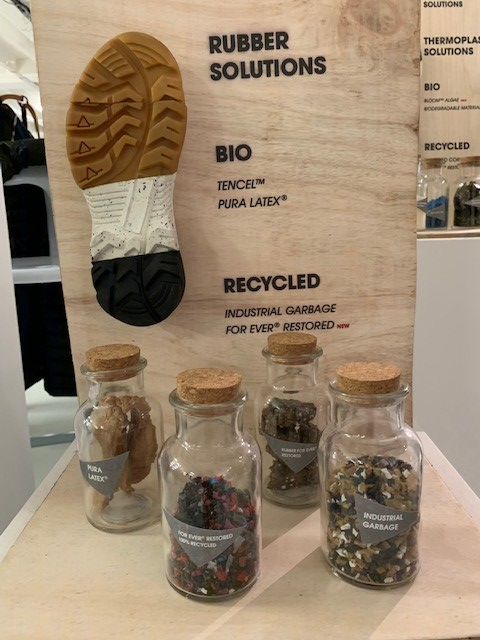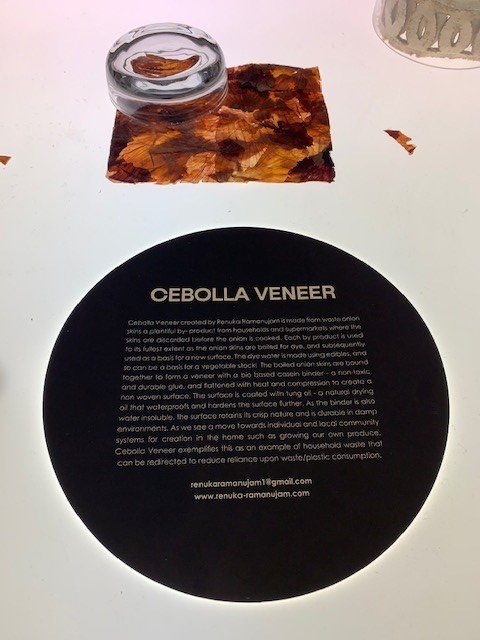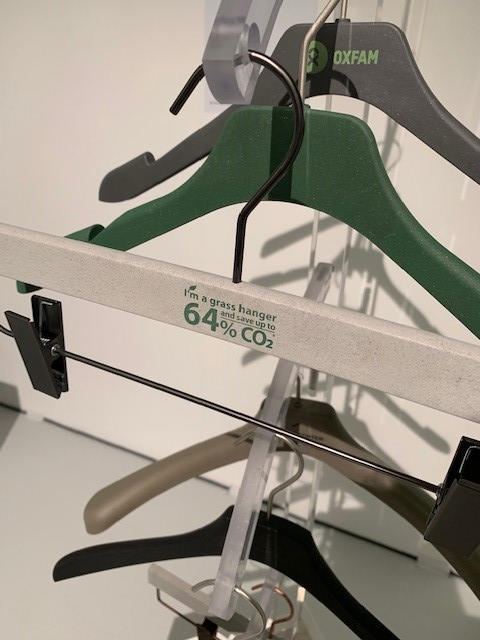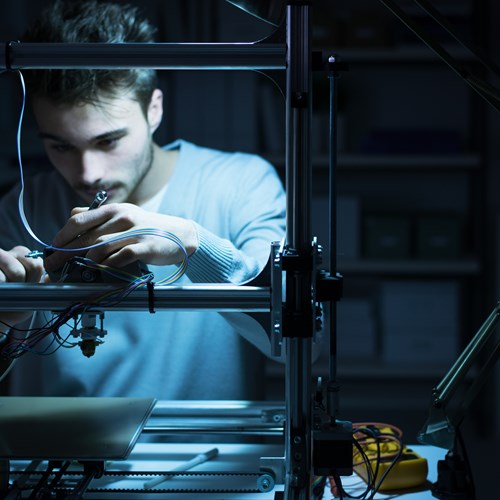What is Sustainable Fashion?
4 March 2020
The environmental impacts of the fashion and textile industry are well established, significant and far-reaching. As a result, businesses are facing increasing pressure from legislators, lobbyists, activists and consumers to come up with innovative solutions that don’t cost the earth.
Additionally, businesses are recognising the opportunities that embracing sustainable fashion can offer for building their brand, differentiating themselves from the competition and mitigating future risks to their business’s long-term security.
In this post, Eco-Innovation specialist Rhiannon Hunt explores what is meant by the term ‘sustainable fashion’, presenting examples of exciting innovations that are emerging onto the market, drawing on her recent trip to The Sustainable Angle’s ‘9th Future Fabrics Expo’. She then provides five best practices for getting started with sustainable fashion in your company, alongside details of local support currently available within Greater Manchester.
What is Sustainable Fashion?
Sustainable fashion can be difficult to define as it serves as an umbrella term that encompasses a wide range of initiatives and approaches spanning the entire product life cycle, including business models, laundering and garment care, and end of life processing. To this end, Dr Anna Brismar of Green Strategy has developed a succinct yet comprehensive explanation of sustainable fashion, defining the term as:
“[…] clothing, shoes and accessories that are manufactured, marketed and used in the most sustainable manner possible, taking into account both environmental and socio-economic aspects. In practice, this implies continuous work to improve all stages of the product’s life cycle, from design, raw material production, manufacturing, transport, storage, marketing and final sale, to use, reuse, repair, remake and recycling of the product and its components.”
Why is Sustainable Fashion important?
With sustainable fashion encompassing such a wide range of possibilities, it can be difficult to know where to begin and how the concept relates to your business. However, with one in three consumers in Europe’s largest markets actively factoring environmental impacts into their decision making process when purchasing clothing (Fashion Revolution, 2018), it is now more important than ever to take action.
Adopting a proactive approach can also help to build resilience in a rapidly changing world, where governments are legislating for change, held to account by an increasingly concerned electorate. The French Parliament, for example, recently approved landmark legislation outlawing the destruction of unsold stock for all non-food retailers. This follows previous reports of luxury clothing and accessory brands burning residual end-of-season stock to maintain exclusivity.
As well as mitigating future risks, transitioning to a sustainable fashion business can also bring added benefits. For example, it has been suggested that demonstrating a strong commitment to sustainability can help your business to attract and retain talent (PWC 2014/ Deloitte’s 2017 report 2017), as employees seek to align their work with their values and a sense of purpose.
Drivers and incentives such as these provide fashion businesses with a compelling case to want to change their practices and to place sustainable fashion at the forefront of their agenda. Fortunately, these motivating forces are now being complemented by the emergence of new research and innovative technologies, materials and processes that are facilitating the transition to a sustainable future for the fashion industry.

Share with your networks

To stay ahead of the game, businesses need to keep up to date with the increasing pressure from legislators, lobbyists, activists and consumers in order to come up with innovative solutions that don’t cost the earth." https://www.businessgrowthhub.com/innovation/resources/blogs/2020/03/what-is-sustainable-fashion
Tweet# Tips for implementing Sustainable Fashion within your business
With the wealth of sustainable fashion options available, knowing where to begin and where your efforts and investment would be best placed can seem like a daunting process. To get you started on your journey, we’ve provided some key tips below:
- Establish your baseline. Understanding and mapping your existing business model and supply-chain is an important first step in identifying key challenges and opportunities specific to your business. This is also important for reviewing and documenting your progress.
- Keep an open mind. Sustainable fashion is an area of continual evolution and solutions can often be found in unexpected places. Widening the scope when searching for materials and processes and keeping up to date with new innovations can help you to stay ahead of the curve.
- Network. Joining the sustainable fashion movement and collaborating with like-minded stakeholders and industry partners can help you to tap into existing initiatives and pool resources; maximising value by working together.
- Identify leaders. Conversations about sustainable fashion can be inspirational and exciting, but establishing accountability within your business can be the key to turning ideas into action.
- Start small and scale-up. Transitioning to a sustainable fashion model is likely to involve considerable change, particularly within well-established businesses. It is therefore important to remember that this is journey, which may consist of many positive steps. Small-scale trials can help you to get started, quickly gain insights and reduce risk, before investing significant time and resources into any given solution.

The latest in Sustainable Fashion innovation
GC Business Growth Hub’s innovation team recently attended The Sustainable Angle’s 9th Future Fabrics Expo in London, which showcased many of the latest developments in textile innovation and sustainable fashion. Below we share some of the key trends that we spotted on the day.
One of the most striking things we observed walking into the packed exhibition space was the extent and variety of materials on display. This clearly demonstrated just how far the industry has come in terms of sustainable innovation and developing alternatives to traditional fibres. Examples included leathers made from pineapple leaves and salmon skins, performance fabrics that were once ocean plastic pollution, 100% chemically recycled synthetic materials and a range of organic, natural fibres, from luxury linens through to ethically sourced peace silks.
This demonstrated the fact that, far from limiting creativity, sustainable innovation has the potential to serve as a real source of inspiration and differentiation for fashion and textiles businesses.
A further observation was the diversification of sustainable fashion to include a range of innovative complementary products, enabling a holistic approach. Examples included bio-based sequins, recycled interlining fabrics, shoe soles derived from algae and sugarcane, swing-tags created with seeded and water-soluble papers and hangers made with grass fibres. Innovations such as these are providing fashion and textiles businesses with the opportunity to adopt sustainable practices throughout their product ranges.
In addition to material samples, there were also a range of sustainable process innovations on show. These included new recycling technologies helping to close material loops and maximise material value, as well as natural and waterless dyeing techniques and on-demand, digital printing technologies to minimise negative environmental externalities, such as waste and pollution. Developments such as these highlighted increased awareness and interest in concepts such as the ‘circular economy’ and ‘industrial symbiosis’.
Another interesting trend observed was the increasingly important role that technology has to play in realising a sustainable future for the fashion and textiles industry. An example of this was the use of QR codes and blockchain to track and trace raw materials and finished products as they move through the production process, helping to overcome key challenges in supply-chain transparency.
Finally, something which can often be overlooked, was the role of community and the growing momentum behind the sustainable fashion movement. Demonstrating the integral role that this can play, an entire section of the Future Fabrics Expo was dedicated to awareness-raising platforms, such as Fashion Revolution and accreditation schemes, like the Sustainable Wool Standard, as well as global movements, including the UN Sustainable Development Goals.

Find out more
Feeling inspired or looking for further guidance and support? If your business is embarking on a sustainable fashion journey or looking to further progress existing initiatives, the Eco Innovation Team at the Hub is on hand to help you:
- Review your business to identify key challenges and explore opportunities
- Rapidly develop, evaluate and prioritize potential solutions
- Collaborate with universities to research, prototype and test new eco innovations
- Be signposted to relevant funding and information sources
- Connect to relevant networks and partners
For support and advice from an eco innovation specialist...
 Innovation Network
Innovation Network